Police have many different roles, including preventing crime, investigating crimes, detaining suspects, conducting searches and seizures, responding to emergencies, maintaining public order, managing traffic, regulating licensing, engaging with communities, combating terrorism and cybercrime, supporting victims, and working with the legal system to handle evidence and prosecute cases.
15 Functions of Police
Preventive Functions of Police
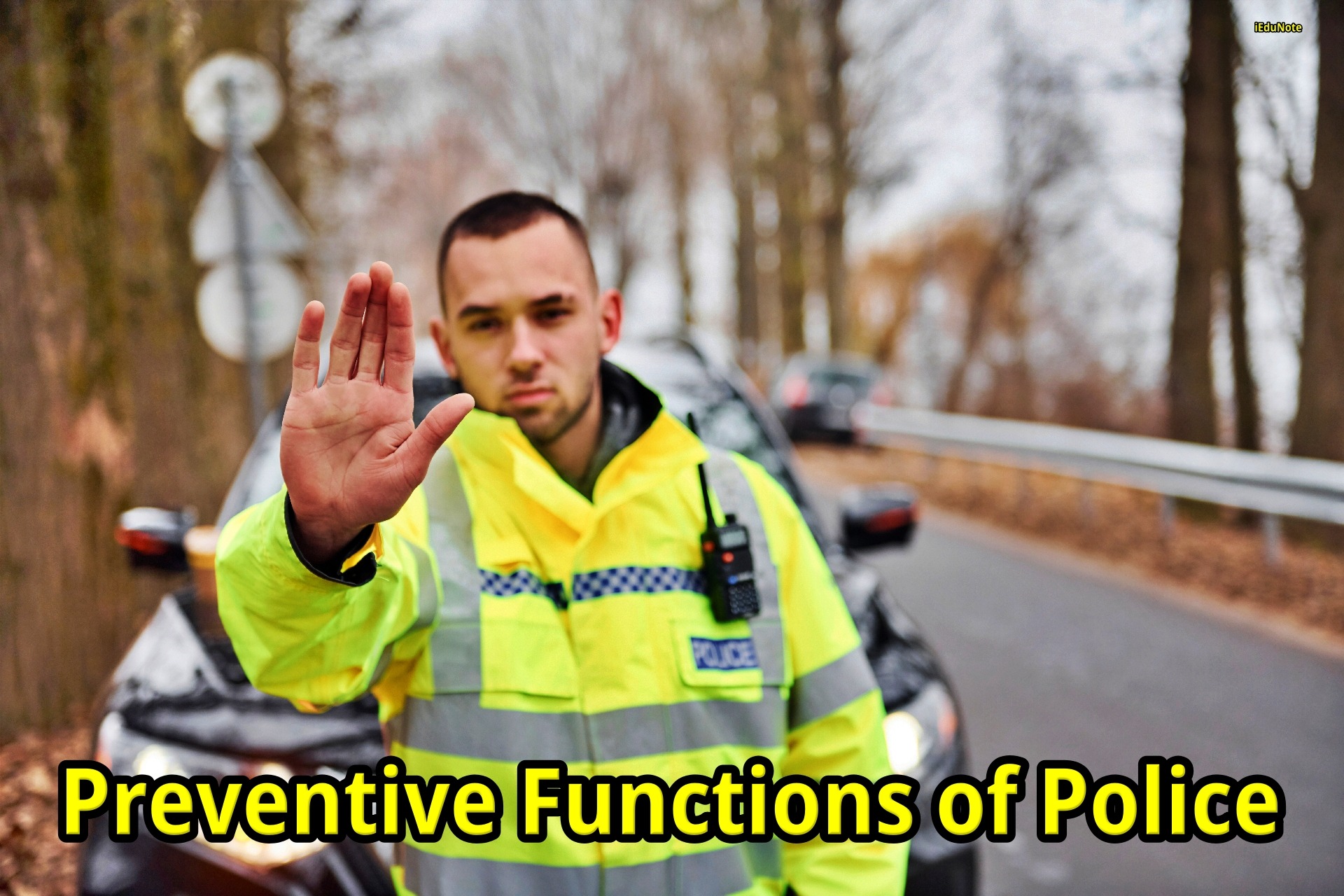
The preventive function of police is foundational to the concept of modern policing. It involves strategies and actions aimed at deterring criminal activities before they occur rather than merely responding to crimes after they have happened.
This proactive approach to law enforcement is based on the theory that a visible police presence and community engagement can significantly reduce crime rates by discouraging potential offenders.
Studies have consistently shown that preventive policing strategies can be effective in reducing crime.
For example, a systematic review by the Campbell Collaboration found that hot spot policing, a strategy where police focus resources on specific areas where crime is concentrated, can reduce crime in those areas without merely displacing it to other locations.
Similarly, community-oriented policing, which emphasizes building relationships between police and communities, has been associated with reductions in crime rates and improvements in public satisfaction with police services.
Real-Life Examples of Preventive Functions of Police
- New York City’s Stop, Question, and Frisk Policy: While controversial, this policy was introduced as a preventive measure, aiming to deter crime through increased police engagement. The New York Police Department reported significant drops in violent crime rates during the years of its most intense application, though the policy also faced criticism and legal challenges over allegations of racial profiling and civil rights violations.
- London’s Knife Crime Strategy: In response to rising knife crime rates, the Metropolitan Police Service implemented a multi-faceted prevention strategy that includes increased stop and search, the establishment of knife crime task forces, and community engagement programs aimed at youths. This strategy seeks to prevent knife-related violence by both deterring potential offenders and addressing the social factors that contribute to such crimes.
- Community Policing in Los Angeles: The Los Angeles Police Department’s Community Safety Partnership program focuses on building trust and collaboration between police and communities in high-crime areas. Officers are assigned to specific neighborhoods for extended periods to develop relationships with residents, engage in problem-solving, and work together on crime prevention efforts. Evaluations of the program have indicated successes in reducing crime and improving community relations.
The preventive functions of police are crucial for maintaining public safety and order. By focusing on deterrence, engagement, and addressing the root causes of crime, police departments can effectively reduce the incidence of criminal activities.
However, the implementation of these strategies requires careful planning, respect for civil liberties, and a commitment to community partnership to ensure they are both effective and just.
Police Conducts Investigation of Crimes

The investigation function of law enforcement agencies is a cornerstone of the criminal justice system, serving as the primary means through which crimes are solved and offenders are brought to justice.
This critical function is underpinned by a meticulous process of gathering, analyzing, and interpreting evidence to reconstruct criminal events, identify perpetrators, and support the prosecution process.
The sophistication and efficiency of investigative practices are paramount to upholding the rule of law, ensuring public safety, and maintaining societal trust in law enforcement institutions.
Empirical Insights and Methodological Innovations
The evolution of crime investigation methodologies, underscored by advancements in forensic science and digital technologies, has markedly enhanced the capacity of law enforcement agencies to solve crimes.
For instance, the integration of DNA analysis into investigative protocols has revolutionized the identification of suspects and the verification of their involvement in criminal activities.
According to data from the Innocence Project, DNA evidence has been instrumental in exonerating over 375 wrongfully convicted individuals in the United States alone, highlighting its pivotal role in both solving crimes and correcting miscarriages of justice.
Moreover, the application of digital forensics in tackling cybercrime exemplifies the adaptability of investigative functions to contemporary challenges.
The Federal Bureau of Investigation’s (FBI) Cyber Division, through initiatives like the Internet Crime Complaint Center (IC3), has been at the forefront of addressing crimes in the digital domain, emphasizing the criticality of evolving investigative capabilities in parallel with technological advancements.
Exemplary Cases and Jurisdictional Practices
- The Golden State Killer Case: This case stands as a landmark in the application of forensic genealogy in crime investigation. Through the meticulous analysis of DNA evidence and the utilization of public genealogy databases, law enforcement authorities were able to identify and apprehend Joseph James DeAngelo, decades after the crimes were committed. This case not only exemplifies the integration of genetic genealogy into investigative processes but also sets a precedent for the ethical considerations and privacy implications inherent in such methodologies.
- Operation Venetic in the United Kingdom: As one of the most significant operations against organized crime, Operation Venetic was launched following the infiltration of EncroChat, a secure communication platform used by criminals. The operation led to the arrest of over 746 suspects and the seizure of substantial quantities of drugs, firearms, and cash. This operation underscores the importance of international cooperation and the utilization of advanced digital interception techniques in dismantling organized crime networks.
The investigation of crimes is an intricate and evolving function of policing that requires a balance between methodological rigor, technological innovation, and ethical considerations.
The effectiveness of investigative practices is critical not only for the resolution of individual cases but also for the broader implications on justice, public confidence, and the deterrence of future criminal activities.
As such, continuous investment in training, research, and inter-agency collaboration is essential to enhance the investigative capacities of law enforcement agencies, ensuring their alignment with both current and emerging criminal landscapes.
Police Conduct Interrogation and Detainment
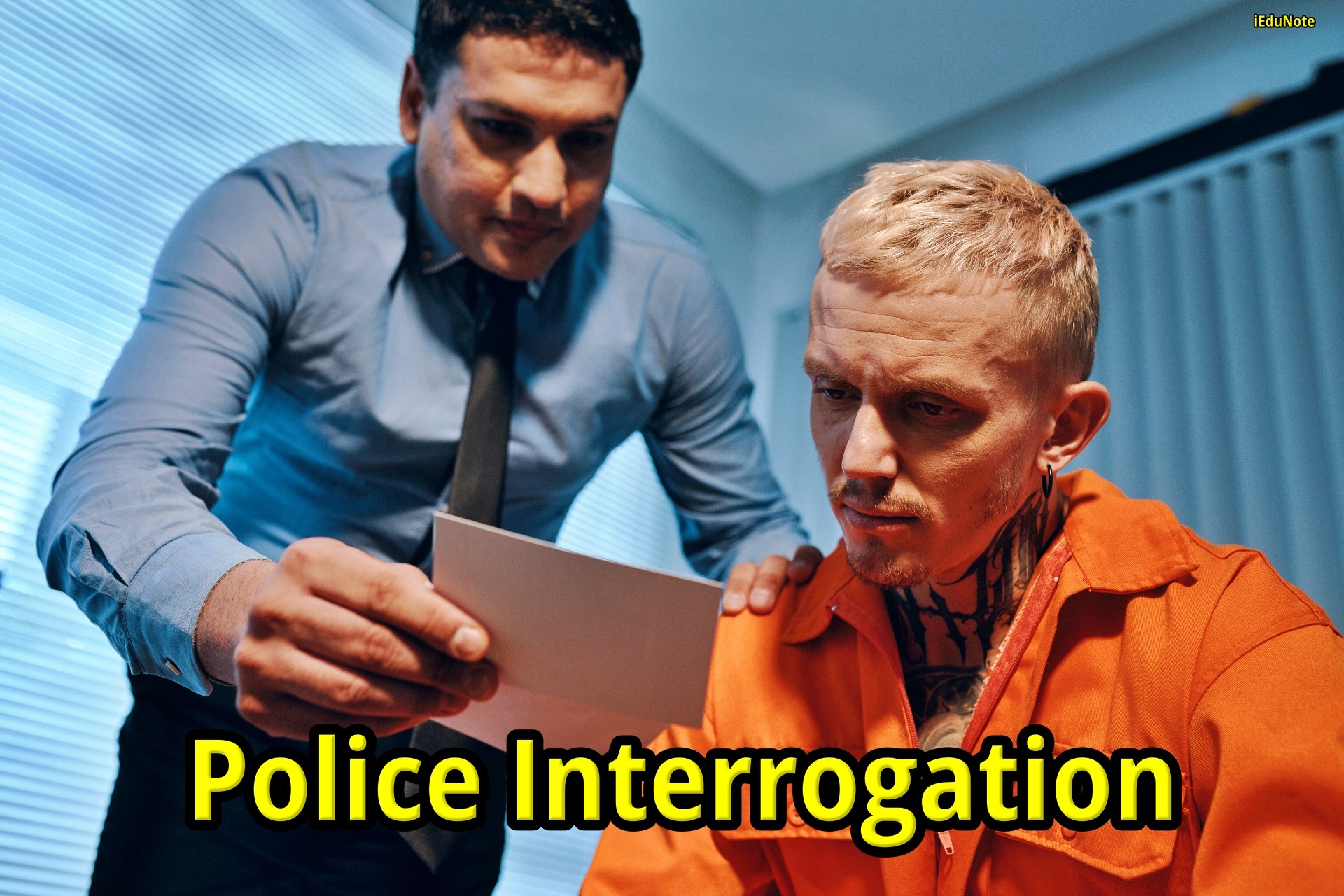
Interrogation and detainment represent pivotal mechanisms within the law enforcement arsenal, designed to elicit information critical to advancing criminal investigations and preventing imminent threats to public safety.
These procedures, governed by strict legal frameworks and ethical guidelines, are instrumental in corroborating evidence, clarifying suspect narratives, and, ultimately, securing convictions.
The effective execution of these functions underscores the balance between the imperative to solve crimes and uphold justice and the necessity to safeguard the rights and dignity of individuals.
Legal and Ethical Dimensions of Police Interrogation and Detainment
The administration of interrogation and detainment is bound by international human rights law, including the United Nations Convention against Torture and Other Cruel, Inhuman or Degrading Treatment or Punishment, and domestic legal standards, such as the Miranda rights in the United States. These legal provisions ensure that individuals are informed of their rights, including the right to remain silent and the right to legal representation, thereby mitigating the risk of coercion and the elicitation of false confessions.
Empirical research underscores the efficacy of non-coercive interrogation techniques, such as those outlined in the PEACE model (Preparation and Planning, Engage and Explain, Account, Closure, and Evaluate), emphasizing rapport-building and psychological strategies over confrontational approaches. Studies have demonstrated that these methods uphold ethical standards and enhance the likelihood of obtaining accurate and voluntary disclosures from detainees.
Illustrative Cases and Jurisdictional Practices of Police Interrogation and Detainment
- The Central Park Five: This case exemplifies the grave consequences of improper interrogation techniques, where five teenagers were wrongfully convicted for a crime they did not commit, based largely on coerced confessions obtained without legal representation or parental presence. Their convictions were later vacated, highlighting the critical need for adherence to lawful and ethical interrogation standards to prevent miscarriages of justice.
- The Use of Detainment in Counterterrorism: Post-9/11, the United States and other nations have employed detainment as a counterterrorism measure, notably at Guantanamo Bay. These practices have ignited a global debate on the balance between national security interests and human rights, illustrating the complex ethical and legal dilemmas inherent in detainment without trial in the context of international terrorism.
The functions of interrogation and detainment occupy a critical juncture in the criminal justice process, where the imperatives of public safety and crime resolution intersect with the fundamental rights of individuals.
Adherence to legal standards and the implementation of ethical interrogation techniques are paramount to ensuring the justice system’s integrity, preventing wrongful convictions, and maintaining public trust in law enforcement agencies.
Continuous scrutiny, education, and reform are essential to align these practices with evolving legal, ethical, and societal expectations, ensuring they serve the ends of justice in both efficacy and equity.
Search and Seizure Function of Police

The police power to conduct searches and seizures is a critical component of law enforcement’s ability to investigate crimes, gather evidence, and protect public safety.
Governed by a complex interplay of constitutional, statutory, and common law principles, this function is designed to balance the state’s interest in enforcing the law against the fundamental rights of individuals to privacy and security against arbitrary governmental intrusion.
In the United States, the Fourth Amendment to the Constitution establishes the legal foundation for search and seizure, requiring that such actions be reasonable and, in most cases, supported by a warrant issued upon probable cause.
Similarly, European jurisdictions, under frameworks such as the European Convention on Human Rights (Article 8), provide protections against arbitrary searches and seizures, emphasizing the necessity of legal authority and the proportionality of law enforcement actions.
Empirical Insights and Evolving Practices in Search and Seizure Function of Police
The advent of digital technology has expanded the scope of search and seizure activities to include electronic devices and online data, raising complex legal and ethical questions about privacy, data protection, and surveillance. Courts and legislatures worldwide have grappled with these issues, leading to evolving jurisprudence that seeks to adapt traditional principles to the realities of the digital age.
For instance, the Carpenter v. United States decision by the U.S. Supreme Court marked a significant moment in the jurisprudence of digital privacy, ruling that accessing historical cell phone location data constitutes a search under the Fourth Amendment, thereby requiring a warrant. This landmark case underscores the judiciary’s role in redefining the boundaries of privacy in response to technological advancements.
Notable Cases and Legal Controversies of Search and Seizure Function of Police
- The Stanford Financial Scandal: In this high-profile case, law enforcement agencies conducted extensive searches and seizures of financial records and assets associated with the Stanford Financial Group, leading to the conviction of Robert Allen Stanford for orchestrating a massive Ponzi scheme. The operation demonstrated the critical role of search and seizure in uncovering complex financial crimes and highlighted the challenges of managing and preserving vast quantities of seized evidence.
- The Apple iPhone Encryption Debate: Following the 2015 San Bernardino terrorist attack, the FBI sought to compel Apple Inc. to assist in unlocking an iPhone used by one of the attackers, igniting a public and legal debate over encryption, privacy, and the limits of law enforcement’s authority to access digital information. The dispute raised pivotal questions about the balance between national security and individual privacy rights, illustrating the legal and ethical complexities of digital searches and seizures.
The function of search and seizure embodies the ongoing tension between the imperatives of law enforcement and the protection of individual rights.
As society navigates the challenges posed by technological innovation and evolving threats to public safety, the legal frameworks governing search and seizure must continuously adapt, ensuring that law enforcement practices remain effective, lawful, and respectful of the principles of privacy and human dignity.
The judicious application of these powers, guided by rigorous legal standards and oversight mechanisms, is essential to maintaining the legitimacy and integrity of the criminal justice system in the face of changing societal norms and technological landscapes.
Response to Incidents and Emergencies Function of Police
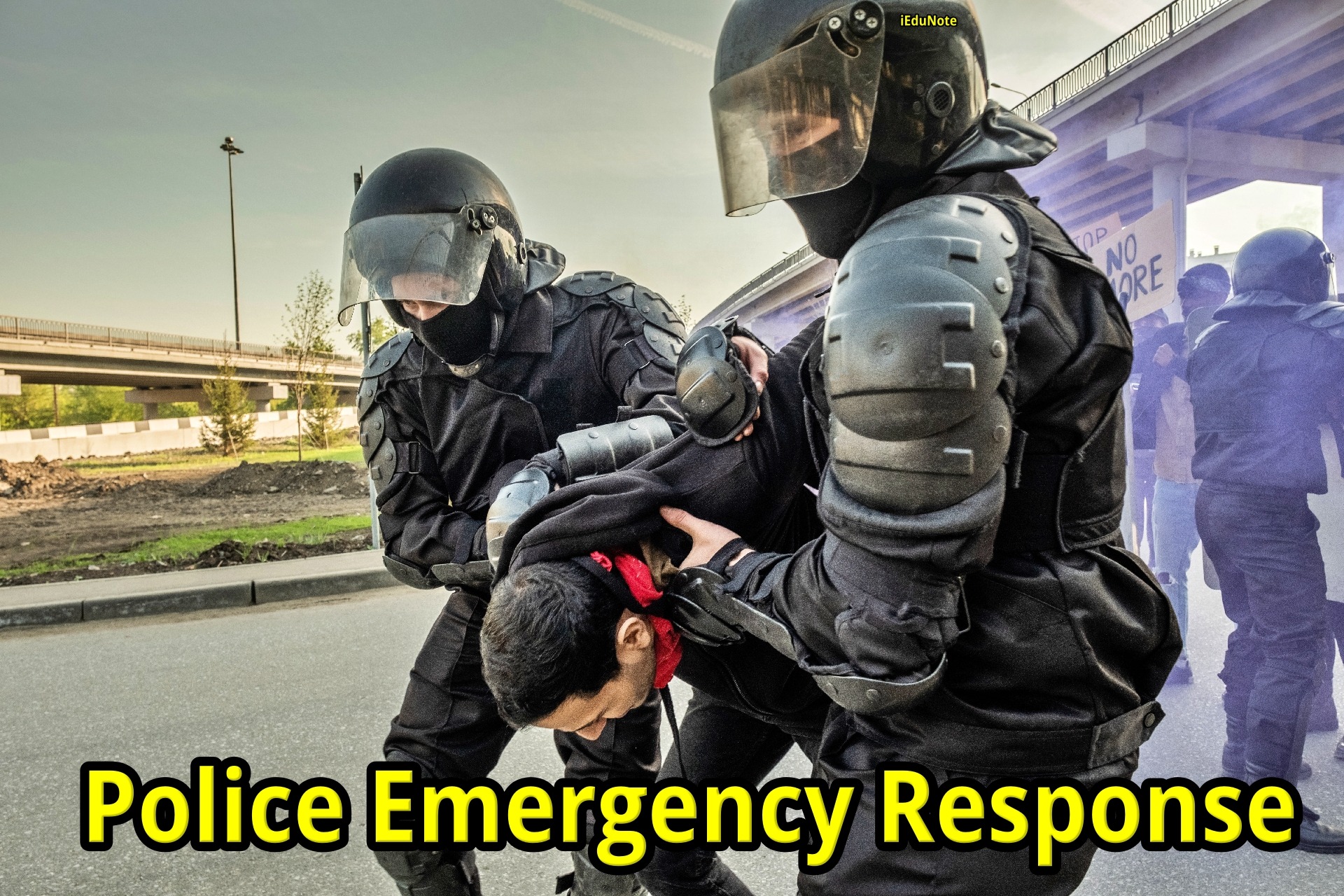
The prompt and efficient response to incidents and emergencies constitutes a fundamental obligation of policing, embodying the immediate application of law enforcement resources to safeguard lives, secure property, and mitigate the impact of unforeseen events.
This function transcends conventional crime-fighting roles, encompassing a broad spectrum of activities from traffic accidents and natural disasters to terrorist attacks and mass casualty events.
The essence of emergency response lies in the capacity of police forces to mobilize quickly, coordinate with other emergency services, and manage crises with competence and composure.
Strategic Frameworks and Tactical Coordination of Emergencies Function of Police
Effective incident and emergency response is predicated on robust preparatory work, including risk assessment, strategic planning, and interagency collaboration. The Incident Command System (ICS) and the principles of the National Incident Management System (NIMS) in the United States exemplify structured approaches to emergency management, facilitating a coordinated response among diverse agencies and ensuring a unified command structure during multi-faceted emergencies.
Moreover, the integration of technological tools, such as real-time surveillance systems and advanced communication platforms, has significantly enhanced situational awareness and operational efficiency, enabling law enforcement agencies to respond to emergencies with increased precision and effectiveness.
Examples of Emergencies Function of Police
- The 2013 Boston Marathon Bombing: The response to the Boston Marathon bombing showcased exemplary interagency collaboration and effective crisis management. Law enforcement’s rapid mobilization, combined with the effective use of surveillance footage and community engagement, led to the swift identification and apprehension of the perpetrators. This incident underscored the importance of preparedness, public communication, and the strategic use of technology in emergency response efforts.
- The 2017 Las Vegas Shooting: As the deadliest mass shooting in modern U.S. history, the Las Vegas shooting presented immense challenges in emergency response, with law enforcement officers playing crucial roles in securing the area, assisting the wounded, and coordinating with medical and emergency services. The incident highlighted the critical need for comprehensive training in mass casualty management and the value of interoperability among first responders.
The capacity to respond effectively to incidents and emergencies is a critical measure of a police force’s operational readiness and a cornerstone of public trust in law enforcement.
Continuous training, investment in technology, and strengthening of collaborative frameworks are essential to enhancing response capabilities. Moreover, the integration of lessons learned from past incidents into training and operational planning is vital for improving future responses.
The function of responding to incidents and emergencies is integral to the mission of policing, demanding not only tactical proficiency and strategic foresight but also a deep commitment to preserving human life and community well-being.
As societal challenges evolve and new threats emerge, the imperative for adaptive, resilient, and community-oriented emergency response strategies has never been more pronounced.
Police Maintain The Public Order
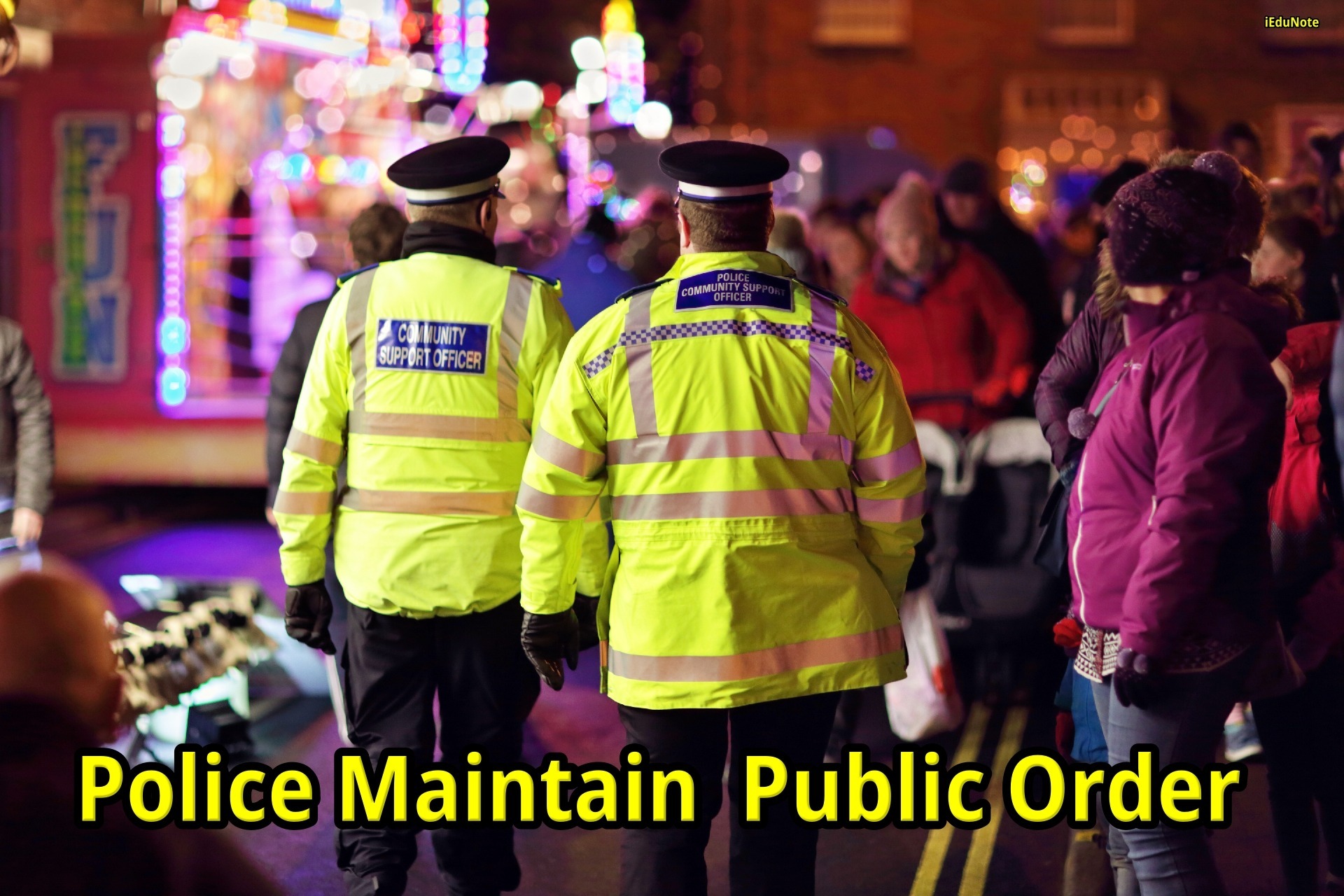
The maintenance of public order is a principal function of policing, foundational to the preservation of peace, safety, and the facilitation of lawful assembly within societies. This role encompasses a wide range of activities, from managing crowds and overseeing public events to mitigating civil unrest and enforcing laws related to public conduct.
The imperative of this function lies in its direct impact on the stability of communities, the protection of citizens’ rights, and the prevention of disorder that may threaten social cohesion or escalate into violence.
Strategic Approaches and Methodological Considerations in Maintaining Public Order by Police
Effective public order policing requires a nuanced understanding of social dynamics, legal boundaries, and the ethical use of authority. Strategies employed must balance the need for control with respect for civil liberties, employing force proportionately and judiciously.
The adoption of community policing philosophies, emphasizing dialogue and cooperation over confrontation, has proven effective in many contexts, fostering mutual respect and reducing the likelihood of conflict.
Furthermore, the deployment of specialized units trained in de-escalation techniques and non-lethal methods of crowd control, such as the use of water cannons, tear gas, and riot gear, is indicative of the complex tactical considerations inherent in public order policing.
While necessary under certain circumstances, these measures require careful oversight to ensure compliance with legal standards and human rights principles.
Exemplary Cases and Jurisdictional Insights of Maintaining Public Order by Police
- The G20 Toronto Summit (2010): The policing of the G20 Summit in Toronto, characterized by substantial public demonstrations, presented significant challenges in public order management. The event drew criticism for the scale of the police response and the detention of protesters, highlighting the delicate balance between maintaining order and upholding democratic freedoms. The subsequent reviews and reports emphasized the need for clear operational guidelines and improved training in managing large-scale public events.
- The Yellow Vest Protests (France, 2018-2019): The Yellow Vest movement in France, marked by widespread protests against economic policies and social inequality, illustrated the complexities of sustained public order policing. The French authorities’ response, involving extensive use of riot police and crowd control measures, was a focal point for debates on governance, policing, and civil rights. The situation underscored the importance of dialogue and policy responses in addressing the underlying causes of civil unrest, beyond the immediate tactical challenges.
Maintaining public order is a critical and challenging aspect of policing, demanding a careful balance between ensuring safety and respecting the rights of individuals to free expression and assembly.
The evolution of public order policing strategies, influenced by lessons learned from successful and controversial responses to mass gatherings and protests, highlights the ongoing need for adaptive approaches prioritizing communication, restraint, and community engagement.
In shaping future policy and practice, law enforcement agencies must continue to integrate training in human rights, crowd psychology, and non-violent conflict resolution, enhancing their capacity to manage public order in a manner that is both effective and respectful of democratic principles.
The role of policing in maintaining public order, therefore, not only reflects the operational capabilities of law enforcement but also embodies the broader societal values of justice, respect, and mutual understanding.
Traffic Management and Enforcement By Police
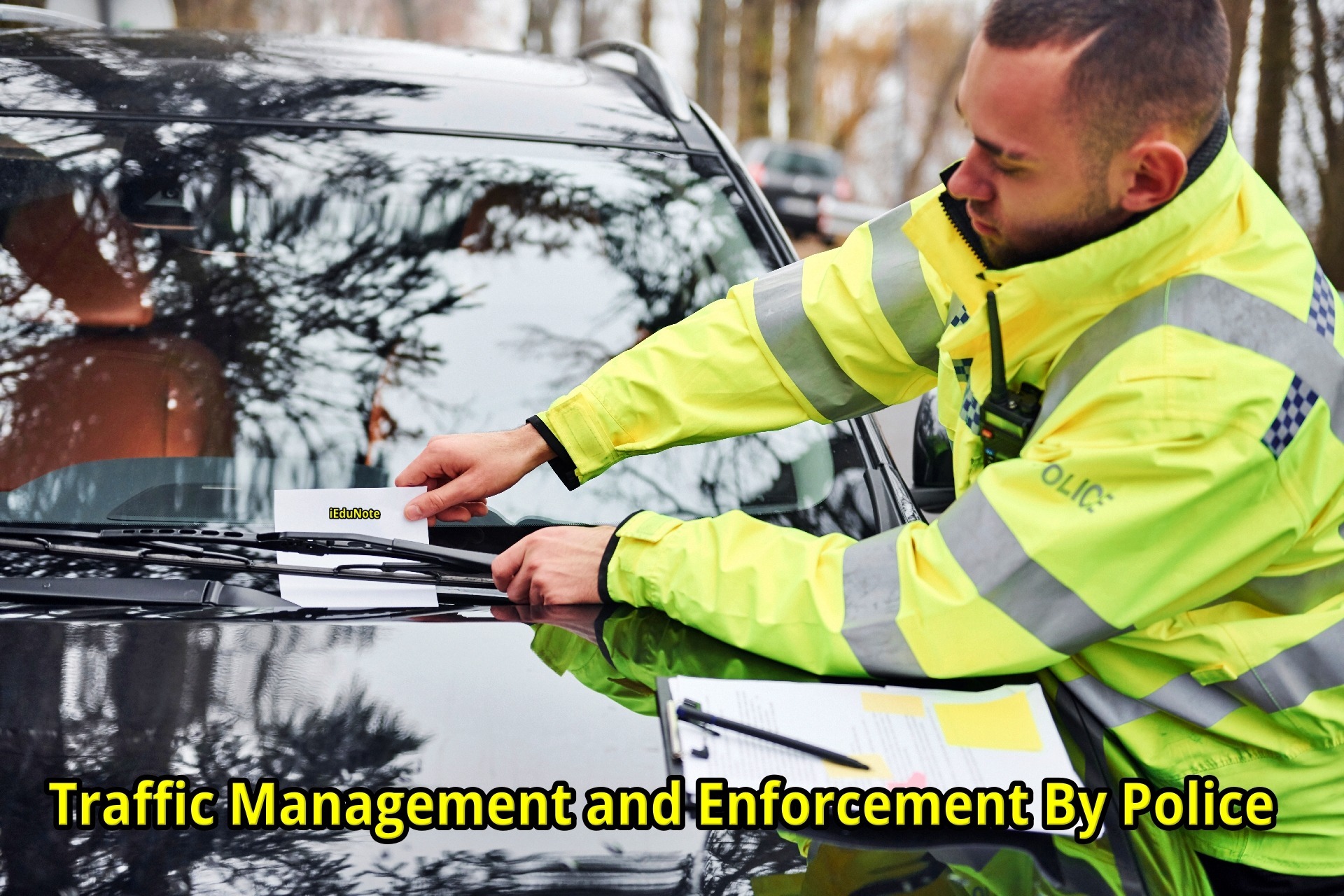
Traffic management and enforcement are critical functions of policing, pivotal to ensuring the safety, efficiency, and orderly flow of vehicular and pedestrian traffic within public roadways.
This role encompasses a broad spectrum of activities, including enforcing traffic laws, investigating road accidents, and implementing measures to prevent traffic-related injuries and fatalities.
The paramount importance of traffic policing lies in its direct contribution to reducing road traffic collisions, enhancing public safety, and facilitating the smooth functioning of transportation networks.
Strategic Framework and Operational Dynamics of Traffic Management and Enforcement By Police
Effective traffic management and enforcement require a multifaceted approach, combining proactive measures such as public education and road safety campaigns with reactive strategies including law enforcement and post-accident investigation.
The utilization of technology, such as speed cameras, automated traffic enforcement systems, and advanced communication tools, plays a crucial role in augmenting the efficiency and effectiveness of traffic policing efforts.
Moreover, the adoption of data-driven strategies, informed by statistical analysis of traffic patterns and accident hotspots, enables law enforcement agencies to allocate resources strategically and target interventions where they are most needed.
This evidence-based approach facilitates a more nuanced understanding of traffic safety issues, allowing for tailored responses to the unique challenges of different jurisdictions.
Examples and Comparative Analysis of Traffic Management and Enforcement By Police
- The Implementation of Vision Zero in Sweden: Sweden’s Vision Zero initiative, aiming to eliminate road fatalities and serious injuries, exemplifies the integration of traffic enforcement within a broader policy framework focused on road safety. This approach, emphasizing the shared responsibility among road users, vehicle manufacturers, and policymakers, highlights the potential of comprehensive strategies that extend beyond traditional policing to achieve significant improvements in traffic safety.
- The Use of Automated Speed Enforcement (ASE) in the UK: The deployment of ASE systems, including speed cameras and average speed enforcement on motorways and urban roads, demonstrates the impact of technology on traffic policing. The UK’s experience has shown that ASE can substantially reduce speeding violations and traffic accidents, underscoring the value of automated tools in supplementing manual enforcement efforts.
Traffic management and enforcement represent a vital aspect of policing, with profound implications for public safety and societal well-being. The complexity of this function demands an integrated approach, combining enforcement with education, engineering, and engagement to address the multifaceted nature of road safety challenges.
As societies evolve and new forms of mobility emerge, the role of traffic policing will continue to adapt, requiring ongoing innovation, collaboration, and a commitment to evidence-based practices.
Ultimately, the effectiveness of traffic management and enforcement in enhancing road safety and ensuring the orderly conduct of traffic depends on the strategic alignment of policy, technology, and community engagement, underpinned by a steadfast dedication to the preservation of life and the promotion of public welfare.
Inquiry and Reporting on Suicides and Unnatural Deaths By Police Forces
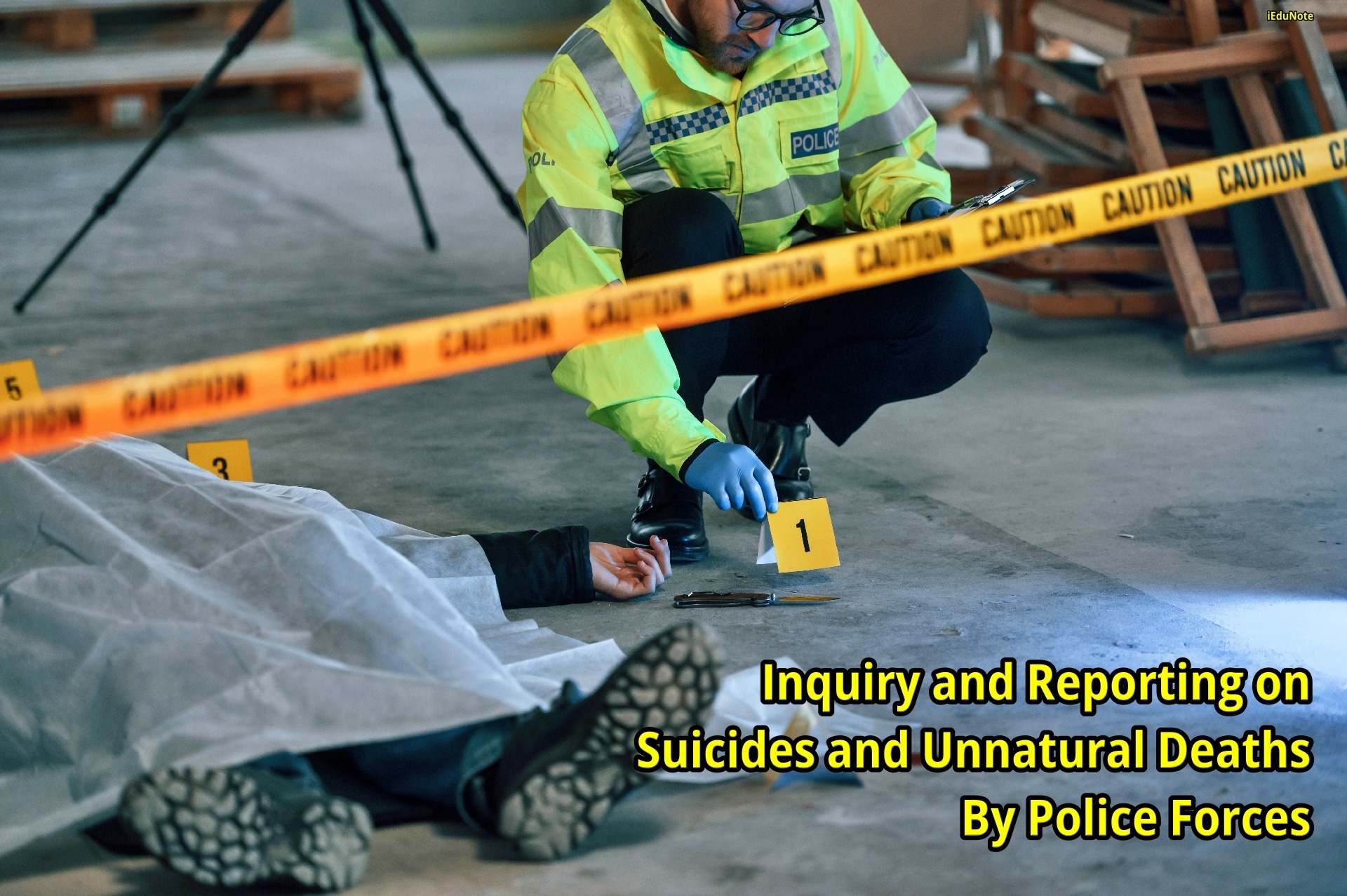
The function of law enforcement agencies in conducting inquiries and reporting on suicides and unnatural deaths is a critical aspect of their mandate, serving a dual purpose of elucidating the circumstances surrounding such deaths and ensuring the rule of law.
This responsibility not only aids in the determination of the cause and manner of death but also plays a vital role in identifying potential criminal elements, safeguarding public health, and providing closure for bereaved families.
The investigative process into suicides and unnatural deaths underscores the intersection of policing, forensic science, and public health, reflecting a comprehensive approach to addressing these profound societal issues.
Methodological Framework and Collaborative Dynamics of Inquiry and Reporting on Suicides and Unnatural Deaths By Police Forces
Effective investigation and reporting on suicides and unnatural deaths require a multidisciplinary approach involving collaboration between law enforcement, forensic pathologists, medical examiners, and, in some jurisdictions, coroners.
The process encompasses scene investigation, autopsy, toxicological analysis, and review of the deceased’s medical and personal history, aimed at constructing a factual account of the death.
Furthermore, the application of specialized investigative protocols for suicides and unnatural deaths, with an emphasis on sensitivity, confidentiality, and respect for the deceased and their families, is paramount.
This approach ensures that investigations are conducted ethically, with due consideration for the emotional and psychological impact on those affected by the death.
Exemplary Cases and Jurisdictional Practices of Inquiry and Reporting on Suicides and Unnatural Deaths By Police Forces
- The Role of Coroners in the UK: In the United Kingdom, coroners play a central role in investigating deaths that are sudden, unexplained, or suspicious. The coronial process involves a thorough examination of circumstances through inquests, a public hearing to determine the cause of death. This transparent mechanism exemplifies the procedural rigor and community engagement inherent in the inquiry and reporting on unnatural deaths.
- Mental Health Interventions in Law Enforcement: Several jurisdictions have integrated mental health considerations into their investigative protocols for suicides and unnatural deaths. For instance, some police departments in the United States have adopted policies to involve mental health professionals in the aftermath of suicides, providing support to families and identifying preventive measures. This holistic approach highlights the evolving recognition of the broader societal factors underlying suicides and the importance of addressing mental health as a public safety concern.
The inquiry and reporting on suicides and unnatural deaths represent a crucial, albeit challenging, domain of policing, requiring sensitivity, expertise, and intersectoral collaboration. The evolving nature of this function reflects broader societal shifts toward recognizing the complexity of suicides and unnatural deaths, encompassing legal, medical, and social dimensions.
As law enforcement agencies continue to refine their methodologies and enhance collaborative frameworks, the focus must also extend to preventive strategies, including public awareness campaigns, mental health interventions, and community-based support systems.
By situating the inquiry and reporting process within a broader public health and societal context, policing can contribute significantly to understanding and mitigating the factors contributing to suicides and unnatural deaths, ultimately fostering a safer and more compassionate society.
Police Function as Prosecutor
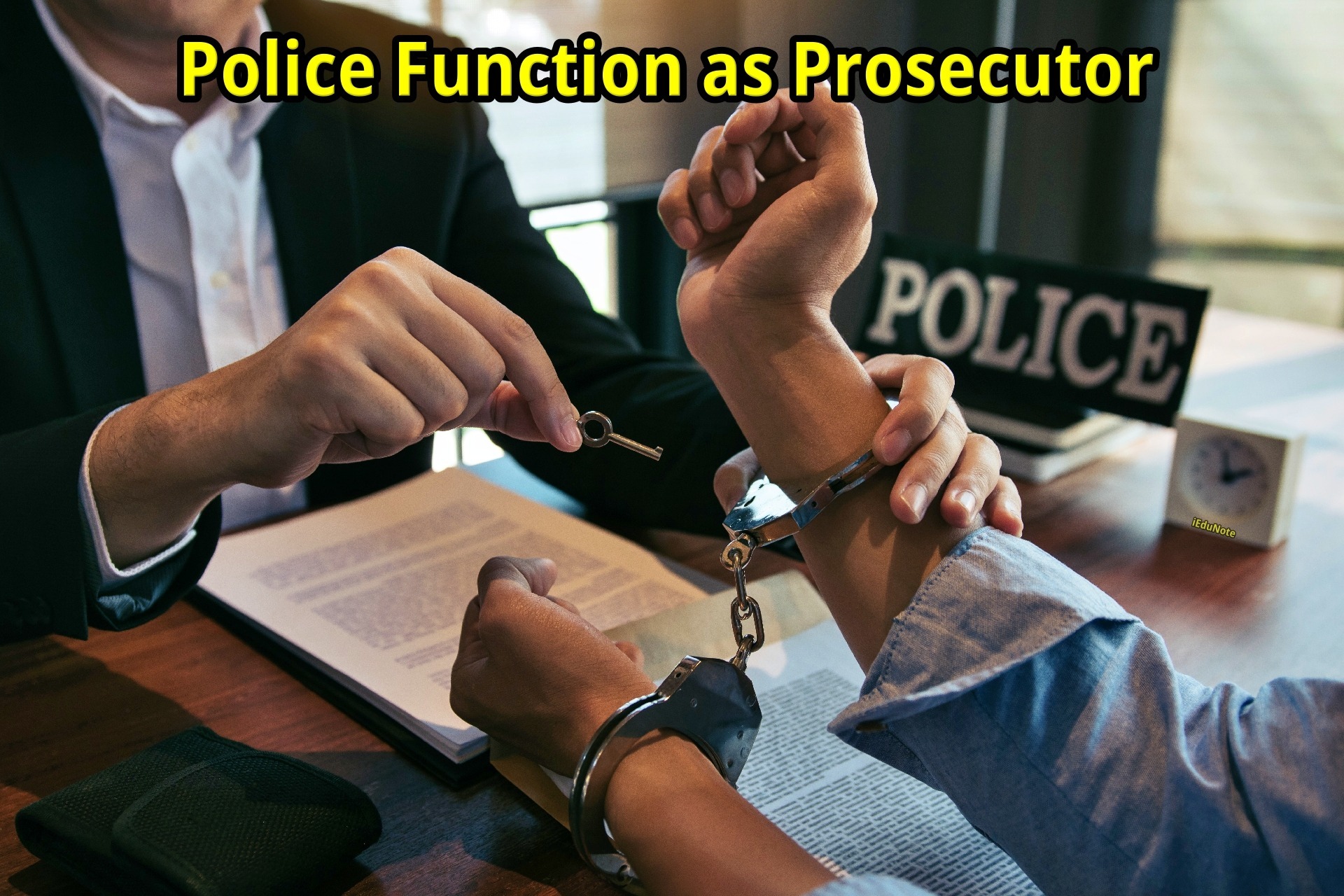
The function of law enforcement agencies as prosecutors embodies a critical juncture in the criminal justice system, where the roles of investigation and legal advocacy converge to uphold the rule of law.
In jurisdictions where police officers or law enforcement agents are vested with prosecutorial responsibilities, this dual function enhances the seamless transition from investigation to prosecution, ensuring that criminal cases are pursued efficiently and effectively.
This prosecutorial role is fundamentally underpinned by principles of justice, fairness, and the diligent pursuit of legal remedies against criminal activities.
Strategic Imperatives and Ethical Considerations of Police’s Prosecutor Function
The integration of prosecutorial functions within law enforcement necessitates a comprehensive understanding of legal standards, evidentiary requirements, and procedural law, alongside the ethical imperatives of impartiality, transparency, and accountability.
Officers and agents performing these roles must navigate the complexities of legal advocacy, balancing the pursuit of convictions with the overarching duty to seek justice, including the obligation to disclose exculpatory evidence.
Moreover, the prosecutorial discretion vested in law enforcement officials demands rigorous training and adherence to ethical guidelines, ensuring decisions regarding charges, plea bargaining, and case presentation are made in the best interest of justice, rather than convenience or expediency.
Illustrative Examples and Comparative Practices of Police’s Prosecutor Function
- Direct Prosecution by Police in Certain Jurisdictions: In some countries, such as Japan and certain Scandinavian nations, law enforcement officials have the authority to prosecute minor offenses directly in court. This system aims to streamline the legal process, reduce the burden on prosecutorial offices, and utilize the specialized knowledge of law enforcement in presenting cases related to public order and safety.
- Specialized Units within Law Enforcement Agencies: In the United States and other jurisdictions, specialized units within police departments, such as district attorney investigators or police legal advisors, play a pivotal role in bridging the gap between investigation and prosecution. These units, staffed by law enforcement officers with extensive legal training, assist in preparing cases for trial, ensuring that evidence is collected and presented in compliance with legal standards, and facilitating the strategic planning of prosecutorial strategies.
The prosecutorial function of law enforcement, where applicable, represents a distinctive approach to criminal justice, emphasizing the integration of investigative and legal expertise.
However, the effectiveness of this model is contingent upon rigorous legal education, ethical vigilance, and the implementation of checks and balances to prevent conflicts of interest and ensure the fair administration of justice.
As the criminal justice system evolves, the role of law enforcement in prosecution prompts ongoing debate regarding the most effective structures for achieving justice.
Continuous evaluation, enhanced training programs, and robust oversight mechanisms are essential to ensuring that law enforcement officials acting in a prosecutorial capacity fulfill their duties with the highest standards of legal acumen and ethical integrity.
This multifaceted role underscores the dynamic interface between law enforcement and the legal system, reflecting the broader societal commitment to justice, accountability, and the rule of law.
Regulatory and Licensing Functions Of Police
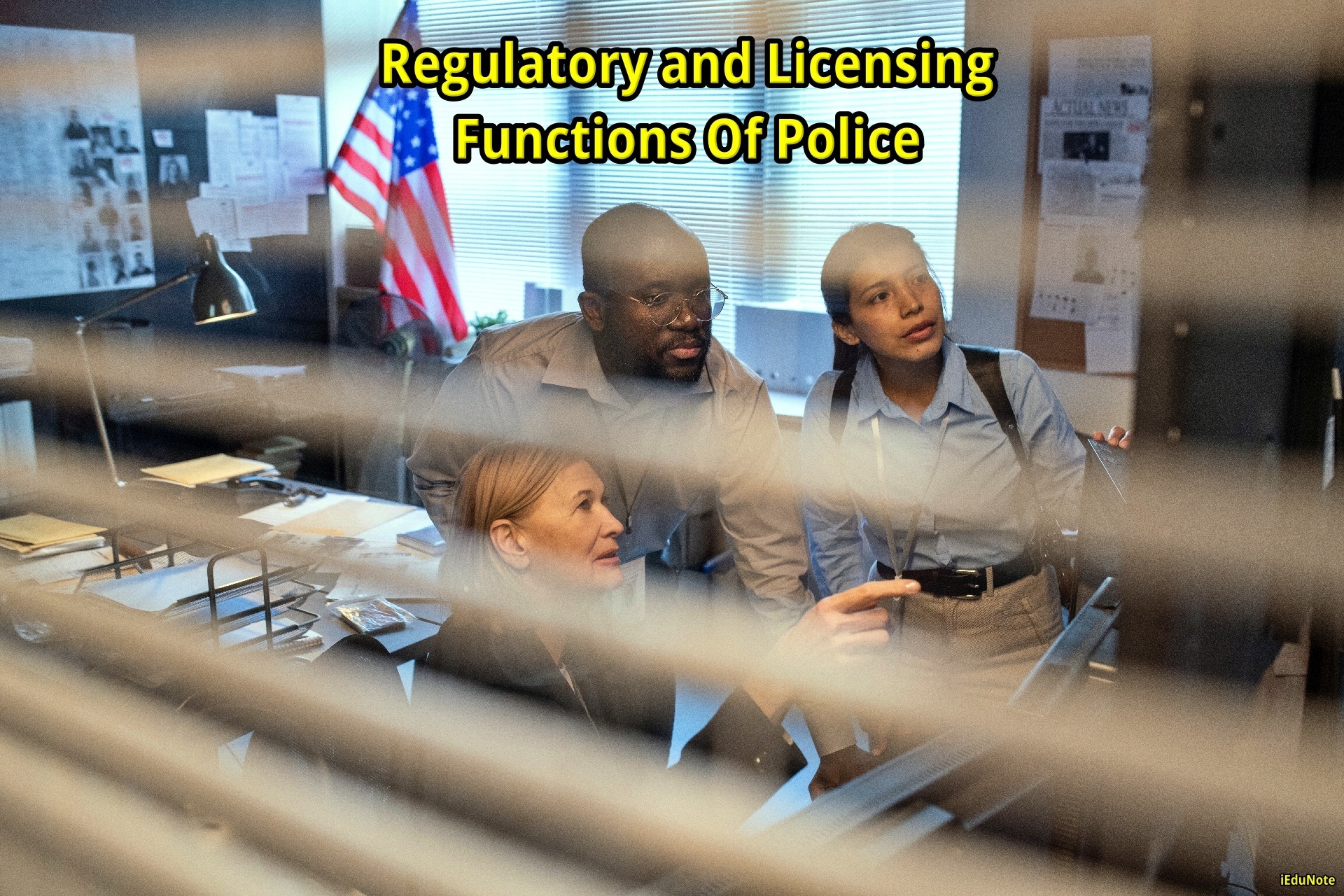
The regulatory and licensing functions executed by law enforcement agencies represent a critical facet of public administration, encompassing the enforcement of laws and ordinances that govern various aspects of societal activity.
This role involves issuing, monitoring, and enforcing licenses and permits for businesses, individuals, and activities requiring regulation to ensure public safety, health, and welfare.
From firearms permits to alcohol licenses and public assembly permits, the regulatory function of policing serves to maintain order, prevent illegal activities, and protect community standards.
Operational Dynamics and Procedural Rigor of Regulatory and Licensing Functions By Police
The effective administration of regulatory and licensing duties demands a comprehensive framework that balances the need for public oversight with the rights and interests of individuals and businesses. This entails a rigorous application process, regular inspections, and enforcing compliance standards, all conducted within the ambit of fairness and transparency.
Law enforcement agencies, often in collaboration with other governmental bodies, ensure that applicants meet specific criteria, thereby mitigating risks associated with regulated activities.
Furthermore, the authority to suspend or revoke licenses for non-compliance underscores the importance of this function in safeguarding public interests.
Such actions, while punitive, are necessary mechanisms to enforce adherence to legal and regulatory standards, emphasizing the role of law enforcement as custodians of public order and safety.
Illustrative Examples and Jurisdictional Insights of Regulatory and Licensing Functions By Police
- Firearms Licensing: In countries with regulated firearm ownership, such as the United Kingdom, police forces are responsible for assessing and issuing firearm and shotgun licenses. This process involves background checks, interviews, and assessments of the applicant’s purpose for owning a firearm, showcasing the meticulous approach required to balance individual rights with public safety concerns.
- Alcohol Licensing: The regulation of alcohol sales, often managed by local law enforcement or specialized regulatory bodies, involves issuing licenses to establishments, enforcing age restrictions, and monitoring compliance with public health and safety regulations. In the United States, for example, state and local authorities conduct compliance checks to prevent underage drinking and ensure licensed premises adhere to operational standards.
- Public Event Permits: The issuance of permits for public demonstrations, parades, and large gatherings is a key aspect of regulatory functions, facilitating the lawful exercise of free speech and assembly while ensuring public safety. The role of law enforcement in this context involves evaluating the potential impact of events on community safety, traffic flow, and emergency services, exemplifying the preventive dimension of policing.
The regulatory and licensing functions of law enforcement are integral to the governance of complex societies, requiring a delicate balance between regulatory oversight and the facilitation of lawful activities.
As communities evolve and new challenges emerge, the adaptability and responsiveness of regulatory frameworks become increasingly significant.
Future advancements in this area may involve greater integration of technology to streamline licensing processes, enhance transparency, and improve compliance monitoring.
Moreover, ongoing dialogue between law enforcement, regulatory bodies, and the communities they serve is essential to ensure that regulatory practices remain aligned with societal values and needs.
Ultimately, the effectiveness of law enforcement in performing these functions is pivotal to maintaining public trust, upholding the rule of law, and fostering a safe and orderly society.
Community Policing and Engagement Of Police
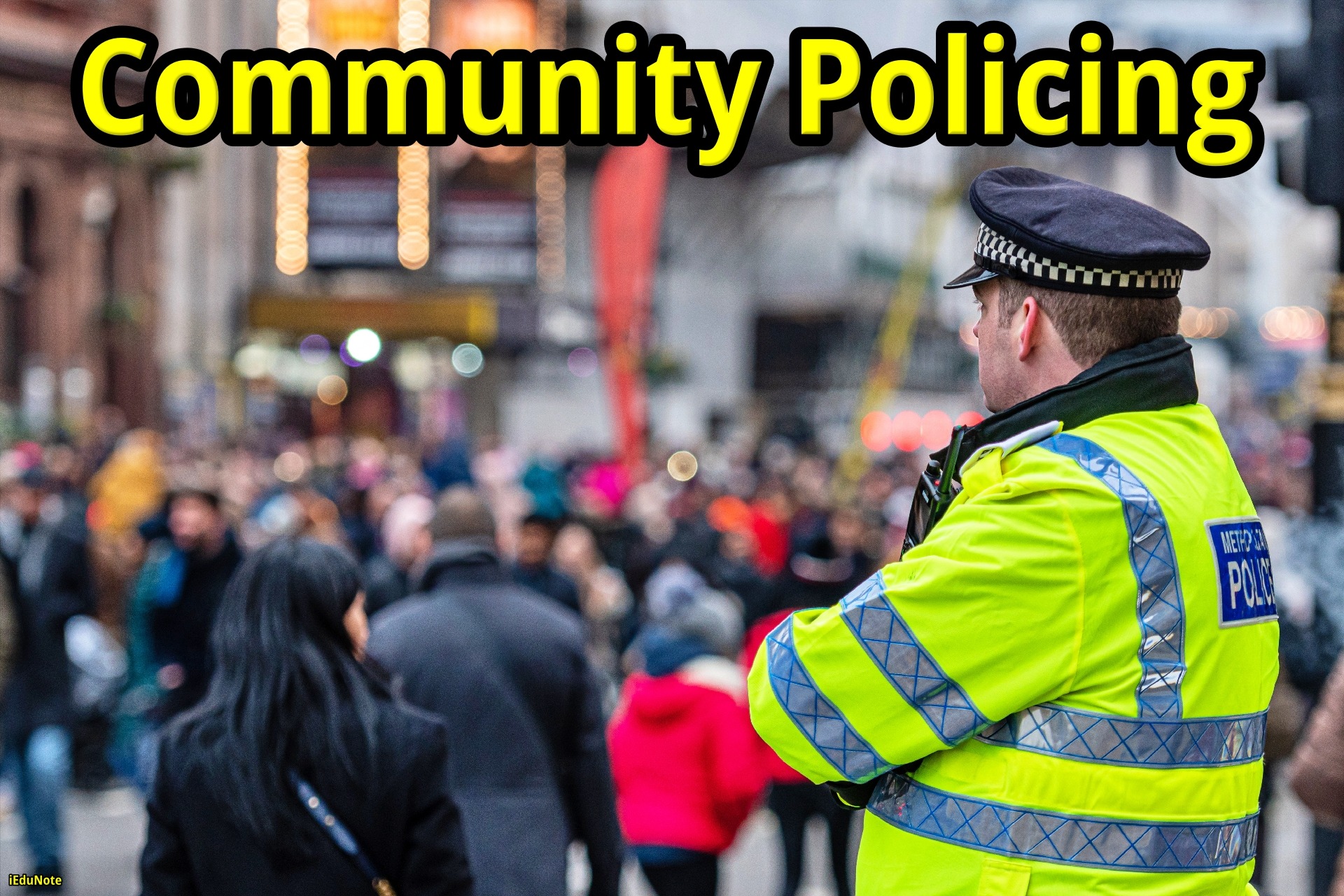
Community policing and engagement signify a paradigm shift in law enforcement strategies, emphasizing the importance of building partnerships between police forces and the communities they serve.
This approach is predicated on the belief that effective policing cannot be achieved solely through reactive measures; instead, it requires a proactive, collaborative effort to address the root causes of crime, enhance public trust, and foster a sense of mutual respect and responsibility.
Community policing is characterized by strategies that promote organizational transformation, community empowerment, and problem-solving techniques that are responsive to the specific needs and concerns of local populations.
Strategic Implementation and Operational Practices of Community Policing and Engagement By Police
The implementation of community policing involves a variety of practices designed to break down barriers between law enforcement officers and community members, including foot patrols, community meetings, and the establishment of community liaison units.
These initiatives aim to facilitate open communication, understand community dynamics, and identify local problems that may contribute to crime and disorder.
By engaging directly with community members, law enforcement agencies can gain valuable insights, increase their accessibility, and tailor their services to better address local concerns.
Moreover, community policing encourages the co-production of public safety, where police and community members collaborate on developing strategies to prevent crime and improve neighborhood conditions.
This approach not only enhances the effectiveness of policing efforts but also empowers communities to take an active role in their own safety and well-being.
Exemplary Models and Success Stories of Community Policing and Engagement By Police
- The Chicago Alternative Policing Strategy (CAPS): Launched in the early 1990s, CAPS represents one of the most comprehensive implementations of community policing in the United States. The program focuses on building strong relationships between police officers and community members through regular meetings, joint problem-solving initiatives, and increased police presence in neighborhoods. Evaluations of CAPS have shown improvements in public satisfaction with police services and reductions in certain types of crime, highlighting the potential benefits of this collaborative approach.
- The Neighbourhood Policing Programme in the United Kingdom: This initiative involves assigning police officers to specific neighborhoods, where they work closely with residents, local businesses, and community groups to address crime and safety concerns. The program emphasizes the importance of visibility, engagement, and partnership in creating safer communities. Reports have indicated that such neighborhood policing efforts have led to increased public confidence in the police and reductions in anti-social behavior and crime rates.
Community policing and engagement represent a vital evolution in law enforcement, reflecting a shift towards more holistic, inclusive approaches to public safety.
The success of this model relies on the commitment of police agencies to embrace organizational change, the willingness of officers to engage in meaningful interactions with community members, and the active participation of communities in their own safety strategies.
As society continues to evolve, the principles of community policing offer a sustainable framework for addressing contemporary challenges, enhancing the legitimacy of law enforcement agencies, and building safer, more cohesive communities.
The ongoing refinement and adaptation of community policing strategies, informed by empirical evidence and community feedback, will be crucial in navigating the complexities of modern policing and ensuring that law enforcement practices remain responsive to the needs and values of the communities they serve.
Counterterrorism and National Security Work of Police
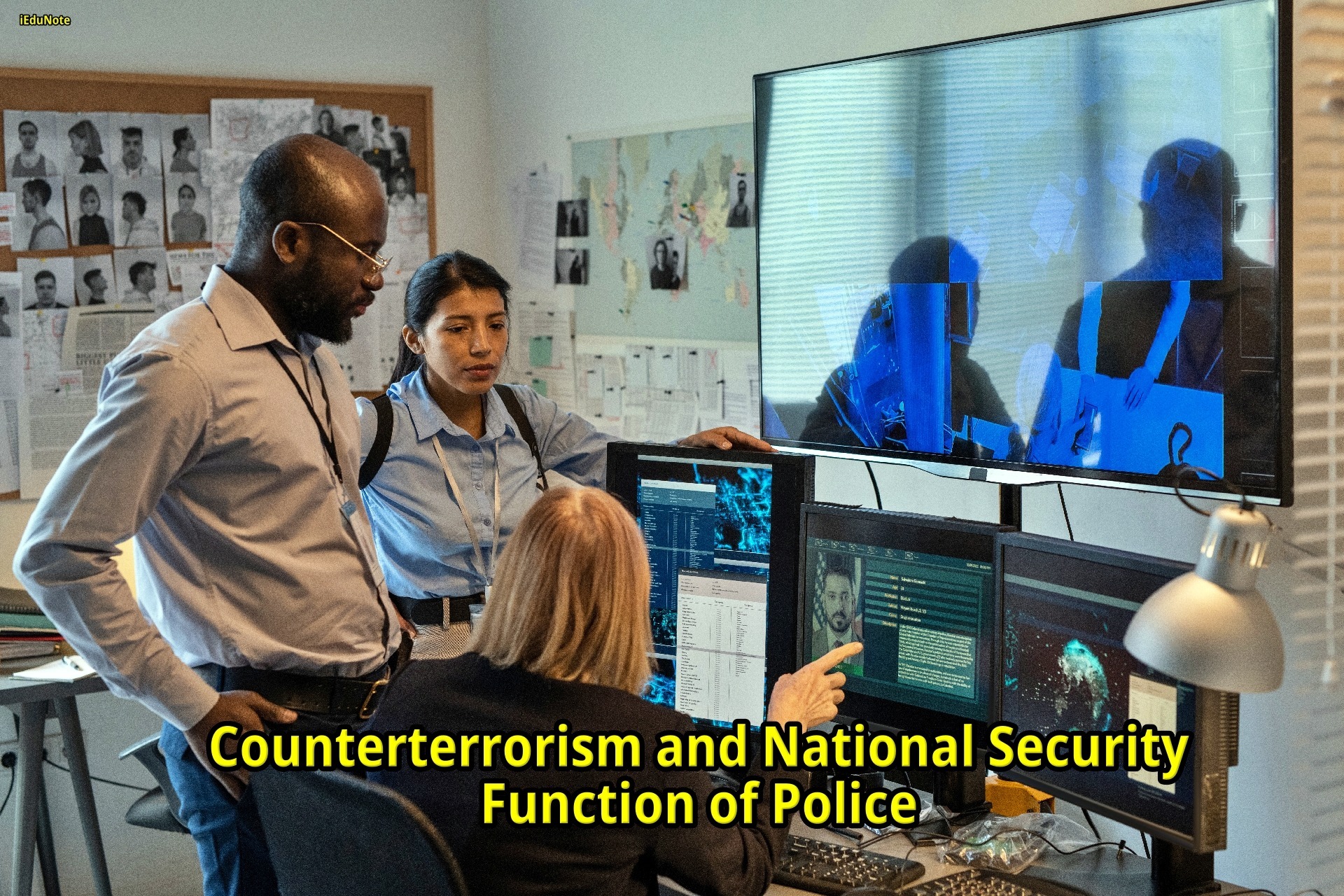
Counterterrorism and national security functions represent a critical dimension of law enforcement’s mandate, addressing the multifaceted threats posed by terrorism and related transnational crimes.
This domain necessitates a proactive and intelligence-driven approach, integrating traditional law enforcement techniques with advanced technological capabilities and interagency collaboration. The primary objective is to detect, deter, and disrupt terrorist activities before they materialize into attacks, thereby safeguarding national security and public safety.
This mission requires a nuanced understanding of the evolving nature of terrorism, including the ideologies that fuel it, the tactics employed by terrorists, and the global networks that support them.
Operational Dynamics and Collaborative Frameworks of Counterterrorism and National Security Work of Police
Effective counterterrorism efforts are characterized by a comprehensive strategy that encompasses intelligence gathering, analysis, surveillance, and the execution of preventive measures.
This strategy is underpinned by robust legal frameworks that empower law enforcement agencies to act decisively against identified threats while safeguarding civil liberties and human rights.
Collaboration among national law enforcement agencies, intelligence services, international partners, and private sector entities is crucial to ensuring a cohesive and coordinated response to terrorism.
Moreover, the integration of community policing principles into counterterrorism strategies is increasingly recognized as essential for identifying and mitigating radicalization pathways.
Engaging with communities, particularly those vulnerable to extremist narratives, helps build trust, facilitates the flow of valuable intelligence, and supports efforts to counter radicalization through education and social cohesion initiatives.
Exemplary Initiatives and Jurisdictional Insights of Counterterrorism and National Security Work of Police
- The Joint Terrorism Task Forces (JTTFs) in the United States: Operated by the Federal Bureau of Investigation (FBI), JTTFs epitomize the collaborative approach to counterterrorism, bringing together representatives from various federal, state, and local law enforcement agencies to conduct terrorism-related investigations. This model facilitates the sharing of intelligence and resources, enhancing the capacity to preempt and respond to terrorism threats effectively.
- The Prevent Strategy in the United Kingdom: As a key component of the UK’s broader counterterrorism strategy (CONTEST), Prevent aims to stop individuals from becoming terrorists or supporting terrorism. This approach is rooted in community engagement, involving a wide range of stakeholders in efforts to identify and intervene in radicalization processes. The Prevent strategy underscores the importance of addressing the underlying causes of extremism, demonstrating a commitment to both reactive and preventive measures in the fight against terrorism.
Law enforcement’s counterterrorism and national security functions are indispensable in the contemporary security landscape, marked by the persistent and evolving threat of terrorism. The complexity of this challenge demands a multifaceted response that balances operational effectiveness with the imperative to uphold democratic values and human rights.
The dynamic nature of terrorism will necessitate ongoing adaptation and innovation in law enforcement strategies. For instance, the increasing significance of cyberterrorism highlights the need for enhanced digital forensic capabilities and international cooperation in cybersecurity efforts.
Moreover, the emphasis on community engagement and preventive measures is likely to grow, reflecting a holistic approach to counterterrorism that seeks not only to disrupt imminent threats but also to address the root causes of radicalization.
Counterterrorism and national security functions underscore the critical role of law enforcement agencies in protecting societies from the scourge of terrorism.
Through operational prowess, strategic collaboration, and community-oriented approaches, law enforcement continues to adapt and evolve in its unending commitment to national and global security.
Cybercrime Investigation Function Of Police

Cybercrime investigation represents a pivotal response to the burgeoning threat posed by crimes conducted through or against computer systems and networks.
In an era characterized by the ubiquitous integration of digital technology into the fabric of daily life, the capacity of law enforcement agencies to investigate cybercrimes effectively is crucial for safeguarding national security, economic interests, and the privacy and rights of individuals.
Given the borderless nature of cyberspace and the complex jurisdictional challenges it presents, this domain requires a confluence of specialized technical expertise, legal acumen, and international cooperation.
Operational Dynamics and Methodological Considerations of Cybercrime Investigation Function Of Police
Effective cybercrime investigation demands a high degree of technical proficiency, including skills in digital forensics, cybersecurity, and information technology, alongside traditional investigative capabilities. Law enforcement personnel must navigate a rapidly evolving digital landscape, identifying and preserving electronic evidence, tracing digital footprints, and countering sophisticated methods employed by cybercriminals.
The procedural aspect of cybercrime investigation is underpinned by legal frameworks that provide the authority to seize digital evidence, conduct online surveillance, and execute cross-border data requests. However, these activities must be carefully balanced with respect for privacy rights and legal standards, necessitating clear guidelines and robust oversight mechanisms.
Illustrative Examples and Jurisdictional Practices of Cybercrime Investigation Function Of Police
- The Silk Road Investigation: The investigation and shutdown of the Silk Road, an online dark web marketplace for illegal drugs and other illicit goods, serves as a landmark case in cybercrime enforcement. Conducted by the Federal Bureau of Investigation (FBI) alongside other federal and international partners, this operation demonstrated the effectiveness of multi-agency collaboration and the application of advanced digital investigative techniques in dismantling online criminal enterprises.
- Operation Tovar: This international effort to disrupt the Gameover Zeus botnet, a global network of infected computers used for financial fraud and extortion, exemplifies the challenges and complexities of combating cybercrime. Law enforcement agencies, including the FBI, the UK’s National Crime Agency, and Europol, worked in concert with private sector partners to neutralize the threat, showcasing the critical role of public-private partnerships in cybercrime investigations.
The investigation of cybercrime is an increasingly critical function of law enforcement in the digital age, addressing threats that range from financial fraud and identity theft to cyberterrorism and espionage.
The effectiveness of these efforts hinges not only on the technical and investigative competencies of law enforcement personnel but also on their ability to operate within an appropriate legal and ethical framework.
As cybercriminals continue to exploit the rapid pace of technological innovation, law enforcement agencies must remain agile, enhancing their capabilities through continuous training, investment in technology, and fostering collaboration both within and across national borders.
Furthermore, the development of international legal instruments and cooperation protocols will be essential to overcoming the jurisdictional hurdles inherent in cybercrime investigation.
In conclusion, the battle against cybercrime is a dynamic and multifaceted challenge, requiring a coordinated global response that leverages the full spectrum of law enforcement, legal, and technological resources.
Through dedicated efforts to bolster their cybercrime investigation capabilities, law enforcement agencies play an indispensable role in protecting society from the ever-evolving threats posed by malicious actors in cyberspace.
Victim Support and Services By Police

Victim support and services encompass a critical component of the law enforcement mandate, reflecting a holistic approach to criminal justice that prioritizes the needs and rights of victims. This extends beyond the immediate response to crime, addressing the broader impact of criminal acts on individuals and communities through the provision of emotional, legal, and practical support.
The essence of victim services lies in recognizing victims as key stakeholders in the criminal justice process, deserving of dignity, respect, and comprehensive assistance to facilitate their recovery and empowerment.
Strategic Frameworks and Operational Practices of Victim Support and Services By Police
Effective victim support and services are characterized by a victim-centered approach that tailors assistance to the unique needs of each individual, acknowledging the diverse ways in which people are affected by crime.
This entails offering immediate crisis intervention, facilitating access to counseling and medical services, providing information about the criminal justice process, and advocating for victims’ rights and interests throughout legal proceedings.
Collaboration with community-based organizations, mental health professionals, and victim advocacy groups is essential to extend the reach and efficacy of law enforcement efforts in this domain.
Furthermore, specialized training for law enforcement personnel on victim sensitivity, trauma-informed practices, and cultural competency is crucial for ensuring interactions with victims are conducted with empathy and understanding.
Illustrative Examples and Comparative Insights of Victim Support and Services By Police
- The Domestic Violence Intervention Programs: Many law enforcement agencies have implemented specialized units or programs to support victims of domestic violence, exemplifying a targeted approach to victim services. These programs often involve partnerships with local shelters, counseling services, and legal advocacy organizations to provide a comprehensive support network for survivors, emphasizing safety planning, legal assistance, and emotional support.
- Victim Compensation Schemes: Various jurisdictions operate victim compensation programs to provide financial assistance to victims of crime, covering expenses such as medical bills, counseling services, and lost wages. These schemes, often administered by state or national governments with the involvement of law enforcement agencies, underscore the recognition of the economic impact of crime on victims and the societal obligation to facilitate their recovery.
The provision of victim support and services is an indispensable aspect of modern policing, reflecting an evolved understanding of law enforcement’s role in fostering justice and healing for individuals affected by crime.
The effectiveness of these efforts is contingent upon a multidisciplinary approach that leverages the strengths and resources of both law enforcement and community partners.
As societal awareness of the needs of crime victims continues to grow, so too does the imperative for law enforcement agencies to enhance their capacity to provide compassionate, comprehensive support services. This entails not only the allocation of resources and training but also a cultural shift within policing towards greater empathy and advocacy for victims.
In conclusion, victim support and services embody a critical juncture between law enforcement, social services, and community engagement, offering a pathway to recovery for victims and reinforcing the principles of justice and compassion at the heart of the criminal justice system.
The ongoing development and refinement of these services are essential to meeting the complex needs of victims and ensuring that the criminal justice process contributes positively to their well-being and empowerment.
Police Follow and Maintain the Criminal Procedure and Evidence

The integral role of police in the criminal procedure and the handling of evidence is foundational to the administration of justice. This function encompasses the meticulous collection, preservation, and analysis of evidence, alongside adherence to procedural laws governing the investigation and prosecution of crimes.
The sanctity of the criminal justice process relies on the integrity and competence with which law enforcement officers execute these duties, ensuring that evidence is obtained legally, ethically, and in a manner that upholds the rights of all parties involved.
Operational Dynamics and Procedural Rigor of Police Follow and Maintain the Criminal Procedure and Evidence
Effective participation in the criminal procedure demands that law enforcement agencies operate within a stringent legal framework designed to safeguard the rights of suspects, victims, and the public. This includes compliance with search and seizure laws, the proper execution of arrest warrants, and the observance of due process rights throughout the investigative process.
The ability of law enforcement to present credible, admissible evidence is crucial to the successful prosecution of criminal cases, necessitating rigorous standards for evidence collection, chain of custody maintenance, and forensic analysis.
In addition to physical evidence, law enforcement’s role in gathering testimonial evidence through witness interviews and suspect interrogations is governed by procedural safeguards, such as the Miranda rights in the United States, which protect individuals’ Fifth Amendment rights against self-incrimination. These procedural norms ensure that evidence is not only legally obtained but also that its probative value is preserved throughout the judicial process.
Illustrative Cases and Best Practices of Police Follow and Maintain the Criminal Procedure and Evidence
- The Use of Body-Worn Cameras: The adoption of body-worn cameras by police departments worldwide represents a best practice in evidence collection and accountability. These devices provide an objective record of police-citizen encounters, enhancing transparency and trust in law enforcement while serving as a critical tool in the documentation of evidence.
- Forensic Advancements in Cold Case Investigations: The application of DNA technology in the re-examination of cold cases illustrates the pivotal role of law enforcement in leveraging scientific advancements to solve crimes. Cases such as the identification and arrest of the Golden State Killer, decades after the commission of his crimes, underscore the enduring impact of meticulous evidence collection and preservation.
The participation of law enforcement in criminal procedure and evidence handling is a cornerstone of the justice system, embodying the principles of legality, fairness, and respect for human rights.
The challenges presented by evolving technologies, emerging crime trends, and the increasing sophistication of criminal enterprises necessitate continual adaptation and enhancement of law enforcement practices in evidence management.
Looking forward, the integration of technological innovations, ongoing professional development, and the strengthening of interagency and international cooperation will be paramount in addressing these challenges.
Moreover, fostering a culture of integrity, accountability, and respect for the rule of law within law enforcement agencies will ensure that their critical role in the criminal procedure continues to support the equitable administration of justice.
Law enforcement’s engagement with criminal procedure and evidence is an indispensable aspect of the legal process, requiring a commitment to excellence, ethical conduct, and continuous improvement to meet the demands of contemporary society and uphold the tenets of justice.